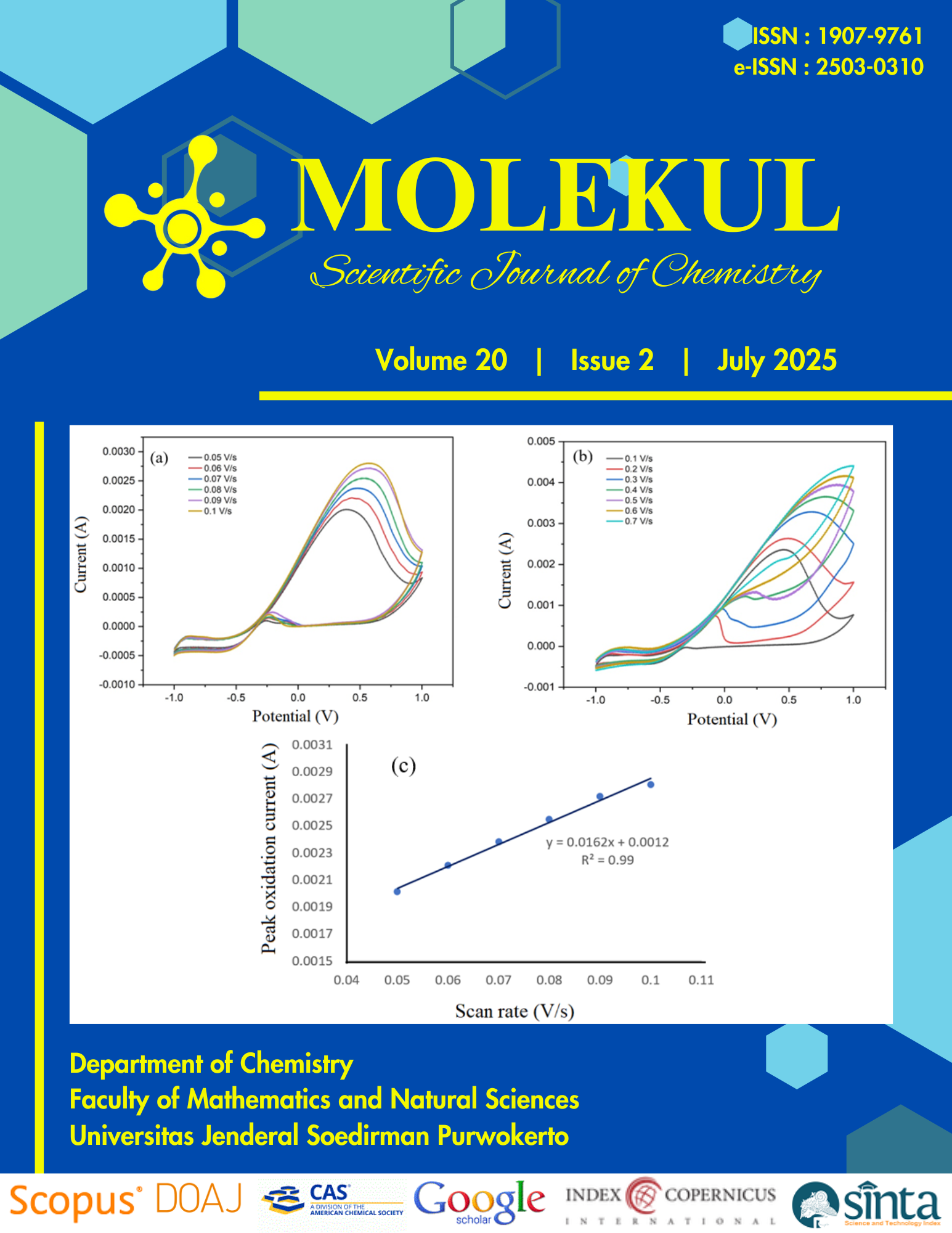N-Doped and Chemically Activated Carbons Derived from Shrimp Shells Waste as Potential Electrode Materials for Electrochemical Supercapacitors
Abstract
ABSTRACT. Supercapacitors are widely recognized as energy storage solutions due to their high-power densities and long cycle life. Furthermore, there is growing scientific and technological interest in converting biomass waste into carbon materials for manufacturing supercapacitor electrodes. In addition to their abundance and cost-effectiveness, the appeal of carbons derived from biomass lies in their tuneable porosity, which enables the rational design of carbon materials to achieve the desired performance of supercapacitors. This work presents the synthesis of activated carbons from shrimp shells waste and its application for supercapacitor electrodes, with an activation treatment using phosphoric acid (H3PO4) and nitrogen doping (N-doped). The activator concentration was varied at 3, 6, and 9 M; while the N-doped ratios were 1:3, 1:5, and 1:7. The characteristics of activated carbon and supercapacitor electrodes was analysed with BET, SEM, CV, and GCD. The resulting materials exhibited amorphous and predominant microporous structures. Increasing the activation concentration gave smaller specific surface area, from 17.522 to 9.509 m2 g−1. The electrochemical properties of these activated carbons for supercapacitor applications were investigated by cyclic voltammetry, galvanostatic charge–discharge, with KOH electrolyte. The best activated carbon produced was mesoporous with the highest specific surface of 17.522 m2/g, obtained at 3 M H3PO4 and a nitrogen doping ratio of 1:3. At the same activator concentration and nitrogen doping ratio (3 M; 1:3), the highest capacitance was obtained 16.320 Farad, with current charging and discharging stop at 475 seconds and 1235 seconds, respectively. This work showcases the efficient and sustainable utilization of shrimp shells waste as a carbon source for supercapacitor applications and highlights their value in a circular economy.
Keywords: Activated carbon, Activator H3PO4, Nitrogen doping, Shrimp shell, Supercapacitor
Authors agree with the statements below:
- Authors automatically transfer the copyright to the MOLEKUL journal and grant the journal right of first publication with the work simultaneously licensed under a Creative Commons Attribution 4.0 International License (CC BY 4.0).
- Authors are able to enter into separate permission for the non-exclusive distribution of the journal's published version of the work (e.g., post it to an institutional repository or publish it in a book), with an acknowledgment of its initial publication in this journal.













